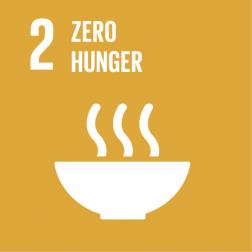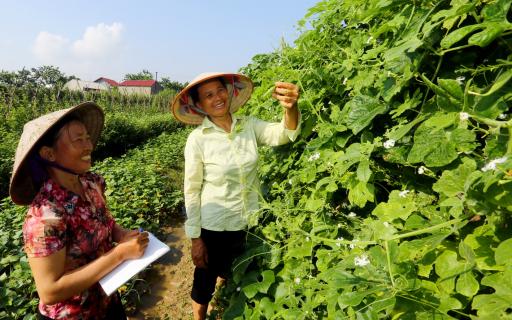
The context
Crucial, life-saving information
Floods. Earthquakes. Hurricanes. When disasters occur, river courses are diverted. Roads subside. And houses collapse. Entire populations are stricken, violently affected and swept away. But then how do you find out who is where? Where to build electricity cables? How to pinpoint starving people?
UAVs are often associated with a military context or regarded as recreational devices, but they are increasingly used for constructive purposes in the humanitarian sector.
Some of these UAVs have an autonomy of many hours: this capability allows humanitarian organisations to respond more quickly to disasters, where saving lives may depend on how effectively the first to respond can obtain accurate data. UAVs are the ideal tools for collecting crucial and potentially life-saving information.
Referring to this project, Minister of Development Cooperation Alexander De Croo explained:
In less than a decade, the cost of responding to humanitarian crises worldwide has increased from €3 billion to more than €20 billion. To respond to these growing needs, we have to invest more in innovation.
The solution
Vital assistance for humanitarian workers

In the event of a disaster, images from UAVs play an essential role. UAVs cannot replace satellites. However, they are excellent at filling the gaps in knowledge.
Cloudy and unsettled weather — for example, in the aftermath of a hurricane — can render satellite imagery inoperable. But UAVs fly underneath the clouds. In addition, there is the advantage of precision — compared to satellites which can film up to 10 metres above the ground, UAVs can zoom in to two or three centimetres.
And whereas satellite imagery can take a week or more to exploit, videos from UAVs are available immediately.
These devices therefore offer various advantages that can benefit the entire humanitarian community. With their remote control and high-resolution cameras, UAVs can scan, record and map large areas in a relatively short time. This allows humanitarian workers to assess the damage after a natural disaster, and determine which sectors are most in need of assistance.
Such identification and assessment missions have already taken place. The humanitarian organisation Medair had considerable difficulty providing assistance in the most affected areas of the Philippines, after Typhoon Haiyan struck in 2013. The satellite images that were available at the time were outdated and of poor quality, and no detailed maps were available. As a result, UAVs were used to take high-resolution images of the terrain, which made it possible to identify the areas where assistance was most needed.
A similar situation occurred following the earthquake in Nepal in 2015. Various humanitarian organisations have used UAVs to collect detailed data and images. As a result, certain affected areas have been mapped, and the damage could be assessed with greater accuracy. This information enabled humanitarian workers to provide more targeted and effective support.
Workshops

For the duration of the project (January 2017 to May 2018) a series of workshops on coordinating and integrating UAVs in humanitarian and development interventions were organised.
In 6 countries across 3 continents, in Burma, Peru, the Dominican Republic, Mozambique, Colombia and Niger, similar 3-day training sessions (2 days of theory and group discussions and one day of simulation in the field) were organised and showed very positive results among the 300 participants, who represented very different profiles. The workshops were also organised with significant involvement on the part of the authorities of the countries concerned, thereby triggering regional coordination initiatives, particularly in Latin America.
More than 80 local WFP staff members also received training, through practical exercises.
Each workshop was well prepared by the WFP and Belgian representatives in each country where the workshops were held, so that the sessions could be adapted to the specific needs of the participants from that country. The project was also reported in various Belgian media, including La Libre and La Dernière Heure, as well as in foreign media, including France Inter.

Overcoming resistance to UAVs, a challenge
Resistance to UAVs is both diffuse and multi-dimensional in nature — it can be legal, security-related, based on the notion of privacy, or of an anxiety-provoking nature.
One of the challenges is to create a global regulatory framework that will allow WFP staff to ensure reliable and efficient UAV flights in complete security. Hence the existence of working groups within other working groups, at the WFP but also within the broader UN system. They have also been set up with a specific objective in mind: to set out the parameters for the deployment of UAVs in the event of humanitarian emergencies.
For example: what would allay fears about the use of UAVs, since some governments fear that they could be used for spying purposes? This is a concern that dates from the Cold War — and is also clearly a contemporary issue, given the growing concerns about mass surveillance and data transfer.

The WFP regards Belgium as a key partner for projects which focus on innovation and technology in the fight against hunger. The WFP’s humanitarian programme which incorporates UAVs is a good example of this. In 2016, Belgium contributed more than €28 million to WFP projects that provide assistance to around eight million people in eight different countries.
The result
Innovation saves lives
For the WFP, which is always looking to promote new practices and technologies to overcome the challenges they face in the midst of chaos and, ultimately, save lives, strong technology and innovation partnerships such as this one with Belgium can foster better, faster and more coordinated responses.
"Innovation saves lives," explained Minister De Croo. "This year, more than 128 million people across the world will need humanitarian assistance and protection. This is triple the number of three years ago. Only by finding better ways to deliver aid more efficiently will we close the gap between requirements and aid delivery on the ground. Belgium lauds the efforts of WFP to come up with innovative solutions to save more lives and help more people in need."
He concluded this way:
“More innovation will save more people. We have been investing in several humanitarian innovation initiatives. The use of drones to fight hunger around the world is one of those projects. We are happy to see how drones are also being used for sustainable agriculture in Benin.”
Source(s)
- Pictures: © World Food Programme - WFP
Articles
- Les drones prennent leur envol pour aider à éradiquer la faim (FR) - © PAM
- Can drones be useful in humanitarian crises? - © Glo.be



